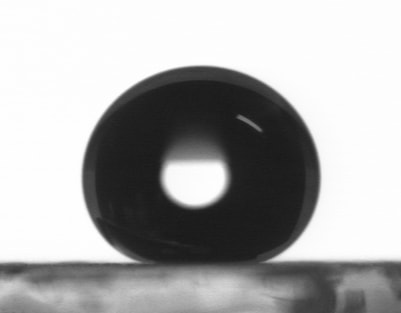Superhydrophobic Composite Coatings
Superhydrophobicity is characterized by a surface having a static water contact angle (the angle between the solid/liquid interface and the gas/liquid interface) greater than 150° and a sliding angle (the planar tilt at which a droplet will roll off of the surface) less than 10°. These properties give superhydrophobic materials the ability to easily shed condensed water. The shed water may also pick up surface contaminants and remove them as it rolls off, hence these interfaces often being referred to as “self-cleaning.” Currently, no known materials have inherent surface energies low enough to be superhydrophobic as a flat, smooth interface. Therefore, in order to achieve superhydrophobicity, low surface energy materials are roughened in order to reduce surface contact and substrate wetting. In the Schoenfisch lab, we utilize sol-gel chemistry to create stable composite superhydrophobic coatings from alkoxysilane-derived precursors. The versatility of sol-gel chemistry allows us to create functionalized silica nano- and micro-spheres to impart surface roughness as well as to create xerogel film matrices to anchor the particles in the coating. While superhydrophobic materials have been proposed for a variety of applications including anti-fogging coatings, self-cleaning windows, and anti-fouling coatings, few examples of using such materials for antimicrobial purposes have been explored. By virtue of their capacity to easily shed water, we have found superhydrophobic materials excel at inhibiting microbial proliferation and show promising potential for use as antimicrobial (bacterial, fungal) coatings, particularly for construction and interior building surfaces.

